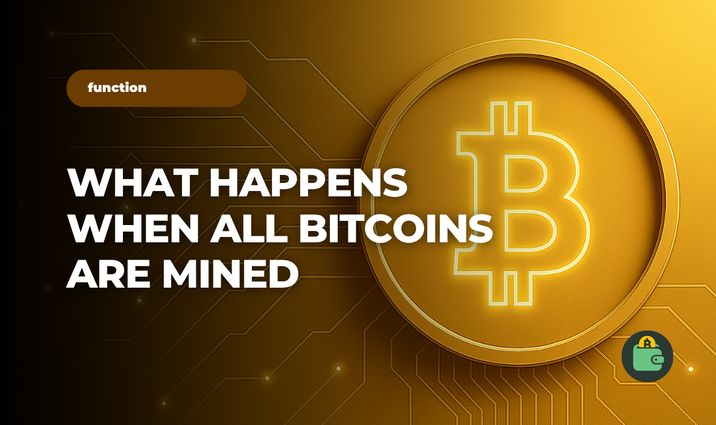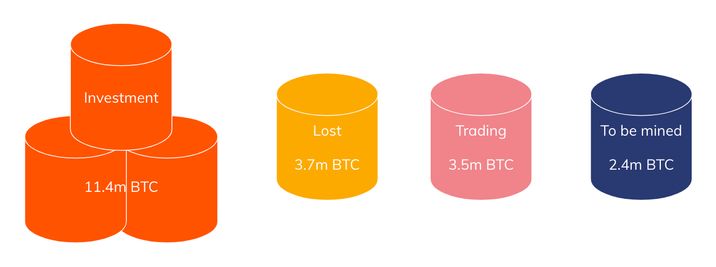What Happens When All Bitcoins Are Mined

Bitcoin’s fixed supply has always been one of its most powerful and controversial design choices. Hard-coded into the protocol is a limit of roughly 21 million coins, a boundary that has shaped Bitcoin’s economics, its culture, and its narrative as “digital gold.”
Although the final satoshi won’t be mined until around the year 2140, the implications of a capped supply have already become visible as the network approaches saturation. With more than 95 percent of all bitcoins mined by late 2025 and block subsidies falling every four years, the crypto ecosystem is gradually shifting toward a future where transaction fees — rather than newly minted coins — become the lifeblood of miner compensation.
We decided to find out what happens when all Bitcoins are mined.
Key Takeaways
- Bitcoin is nearing its 21 million supply cap, with most coins already mined and many permanently lost.
- After 2140, miners will earn only transaction fees, reshaping Bitcoin’s economic incentives.
- Network security will depend on strong fee markets, as the end of block rewards may otherwise weaken miner incentives.
- The fixed supply strengthens Bitcoin’s “digital gold” status but limits its role as everyday currency.
Current Bitcoin Supply
As of November 2025, nearly 19.9 million Bitcoin have been mined, which is over 95% of the 21 million cap.
The figure above illustrates how the cumulative supply has flattened as halvings reduce new issuance. Each new block today creates only 3.125 BTC, versus 50 BTC at inception.
In practice, the approaching cap has already slowed inflation: current annual issuance is well below 2%. Note that a significant fraction of these bitcoins are effectively out of circulation — estimates suggest up to 20% of all mined BTC (about 2–4 million coins) are «lost» forever in dormant wallets (information for 2020). These include early coins for which private keys have been lost or have never moved in many years. Thus, the actual circulating supply is lower than the raw mined total.

The 21-Million Cap and Rounding Effects
In theory the Bitcoin protocol caps supply at 21,000,000 BTC. In practice, due to how rewards are counted in the smallest unit (satoshis) and rounded down at each halving, the final total will be slightly below 21 million. Bitcoin’s code uses binary shifts to halve rewards, which rounds down any fractional satoshis. As a result, the ultimate cap will be on the order of 20,999,999 BTC rather than a perfectly round 21,000,000.
This technical detail means Bitcoin will never actually «mint» the last satoshi in the theoretical limit. By design, though, the difference is negligible compared to the total supply. Importantly, even counting the theoretical cap, no new coins can be produced after the final satoshi is mined around 2140. At that point the block subsidy ends permanently.
Miners and Network Security After the Cap
Once the last subsidy is awarded, miners will no longer receive new bitcoins; their income must come entirely from transaction fees. In other words, mining will continue, but miners will earn only the fees that users include to have their transactions processed. This shift has significant implications. In the short term, miners are expected to raise fees to cover their costs (electricity, hardware, etc.) because fees become the only reward.
Over time, one would expect average transaction fees to increase if demand remains strong, as miners will compete on fee rates instead of new-coin subsidies.
However, relying solely on fees has been flagged as a potential security risk. Researchers at Princeton University have shown that a pure fee-based incentive can induce miners to adopt destabilizing strategies.
For example, because fee rewards are irregular and high-variance, miners might try «forking» or withholding newly found blocks (the so-called selfish-mining or undercutting attacks) in order to capture more fees. Such behavior could waste hashing power and slow block confirmations, undermining the overall security of the Bitcoin network. Thus, experts warn that developers and the community may need to adapt Bitcoin’s incentive rules or scalability solutions to ensure a stable transition.
Economic Model: Fees, Deflation and Store-of-Value
With no new supply after 21 million, Bitcoin’s monetary policy becomes purely disinflationary (indeed deflationary if demand is static). This has two sides. On one hand, scarcity is fundamental to Bitcoin’s value proposition. Many investors treat Bitcoin as a form of digital gold, storing it long-term as a hedge against inflation in fiat currencies.
On the other hand, perpetual deflation could discourage spending and complicate macroeconomic policy. As Ernst & Young’s Paul Brody notes, if Bitcoin were to become a large part of a monetary system, its hard cap might need re-evaluation, since “a lot of economists agree deflationary systems are not necessarily the best thing”. In the context of the 2140 horizon, this issue is largely theoretical: by then, few currencies (other than gold) will remain fixed-supply. But it does highlight a tension: Bitcoin’s capped model means that early adopters tend to benefit most, and future users gain value from past issuance.
Meanwhile, transaction fees themselves become a central part of Bitcoin’s economy. In a mature system, daily usage and fees could stabilize as a market mechanism. For example, if most transactions occur off-chain on faster networks, on-chain fees may only be needed for large-value transfers or settlement. In that scenario, miners could still profit from sizable batches of transactions by charging higher aggregate fees. However, if fees stay low and mining becomes unprofitable, some miners might exit or consolidate. Overall, the network and economy are expected to adapt to these changes rather than collapse outright.
The Bottom Line
Bitcoin’s protocol guarantees that no more than 21 million coins will ever exist, and this fundamental limit will reshape the network’s incentives. When the last bitcoins are mined (around 2140), miners will rely entirely on transaction fees.
In theory, this should not collapse the system – blocks will still be added and coins exchanged – but it will transform Bitcoin’s economic model.
In practice, miners will earn through fees (which may rise), network security will depend on those fees being sufficient to deter attacks, and the network may become less dynamic as long-term holders dominate. The ecosystem is expected to adapt (e.g. via fee markets and new protocols) rather than fail. Still, analysts agree the fixed supply cap will have its biggest impact on miners, and investors could face new risks as transaction incentives change.